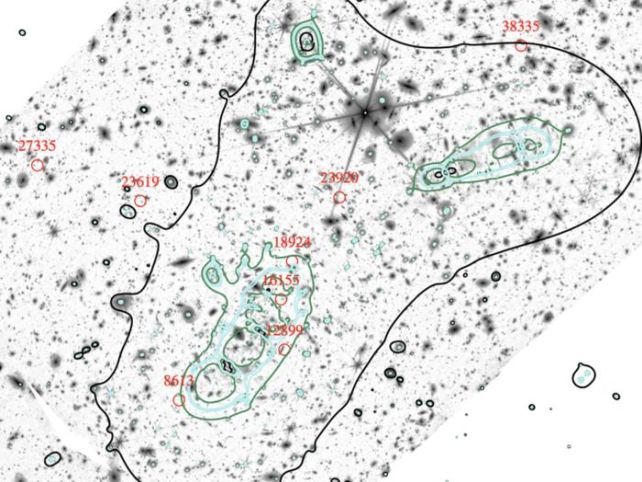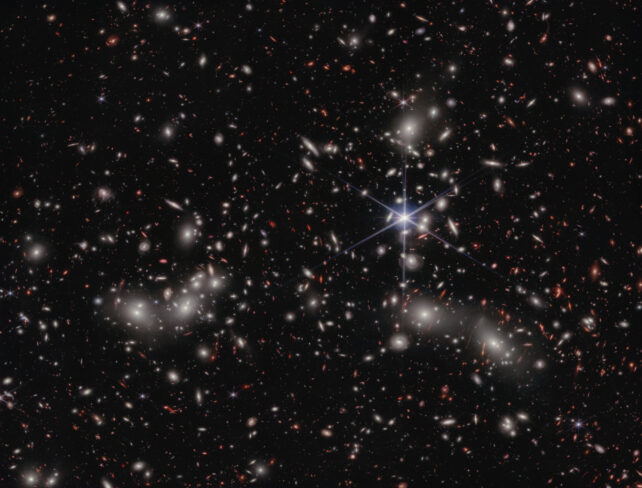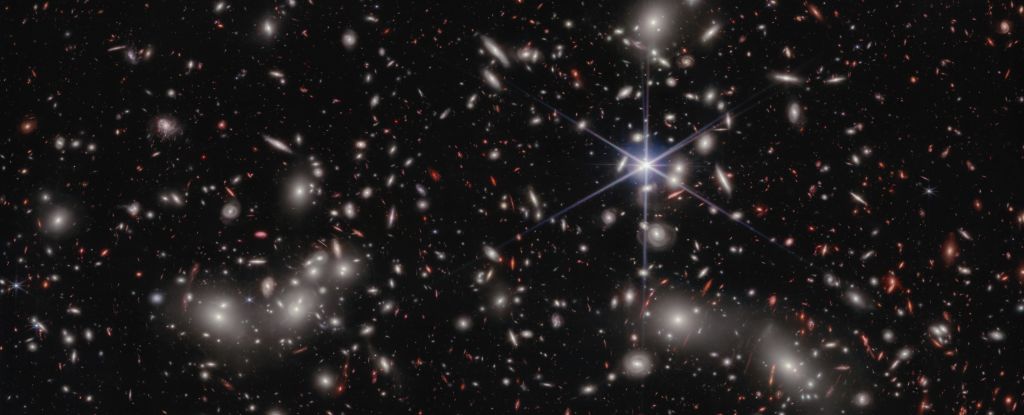Products You May Like
We finally know what brought light to the dark and formless void of the early Universe.
According to data from the Hubble and James Webb Space Telescopes, the origins of the free-flying photons in the early cosmic dawn were small dwarf galaxies that flared to life, clearing the fog of murky hydrogen that filled intergalactic space. A new paper about the research was published in February.
“This discovery unveils the crucial role played by ultra-faint galaxies in the early Universe’s evolution,” said astrophysicist Iryna Chemerynska of the Institut d’Astrophysique de Paris.
“They produce ionizing photons that transform neutral hydrogen into ionized plasma during cosmic reionization. It highlights the importance of understanding low-mass galaxies in shaping the Universe’s history.”
At the beginning of the Universe, within minutes of the Big Bang, space was filled with a hot, dense fog of ionized plasma. What little light there was wouldn’t have penetrated this fog; photons would simply have scattered off the free electrons floating around, effectively making the Universe dark.
As the Universe cooled, after about 300,000 years, protons and electrons began to come together to form neutral hydrogen (and a little bit of helium) gas.
Most wavelengths of light could penetrate this neutral medium, but there was very little in the way of light sources to produce it. But from this hydrogen and helium, the first stars were born.
Those first stars delivered radiation that was strong enough to peel electrons away from their nuclei and reionize the gas. By this point, however, the Universe had expanded so much that the gas was diffuse, and could not prevent light from shining out.
By about 1 billion years after the Big Bang, the end of the period known as the cosmic dawn, the Universe was entirely reionized. Ta-da! The lights were on.
But because there’s so much murk in the cosmic dawn, and because it’s so dim and far away across time and space, we’ve had trouble seeing what’s there.
Scientists thought that the sources responsible for most of the clearing must have been powerful – huge black holes whose accretion produces blazing light, for example, and large galaxies in the throes of star formation (baby stars produce a lot of UV light).
JWST was designed, in part, to peer into the cosmic dawn and try to see what lurks therein. It’s been very successful, revealing all sorts of surprises about this crucial time in the formation of our Universe. Surprisingly, the telescope’s observations now suggest that dwarf galaxies are the key player in reionization.

An international team led by astrophysicist Hakim Atek of the Institut d’Astrophysique de Paris turned to JWST data on a galaxy cluster called Abell 2744, backed up by data from Hubble.
Abell 2744 is so dense that space-time warps around it, forming a cosmic lens; any distant light traveling to us through that space-time becomes magnified. This allowed the researchers to see tiny dwarf galaxies close to the cosmic dawn.
Then, they used JWST to obtain detailed spectra of these tiny galaxies. Their analysis revealed that, not only are these dwarf galaxies the most abundant galaxy type in the early Universe, they are far brighter than expected.
In fact, the team’s research shows that dwarf galaxies outnumber large galaxies by 100 to 1, and their collective output is four times the ionizing radiation usually assumed for larger galaxies.
“These cosmic powerhouses collectively emit more than enough energy to get the job done,” Atek said.
“Despite their tiny size, these low-mass galaxies are prolific producers of energetic radiation, and their abundance during this period is so substantial that their collective influence can transform the entire state of the Universe.”

It’s the best evidence yet for the force behind reionization, but there’s more work to be done. The researchers looked at one small patch of the sky; they need to make sure that their sample isn’t just an anomalous cluster of dwarf galaxies, but is a representative sample of the entire population in the cosmic dawn.
They intend to study more cosmic lens regions of the sky to obtain a wider sample of early galactic populations. But just on this one sample, the results are incredibly exciting. Scientists have been chasing answers on reionization for as long we’ve known about it. We’re on the brink of finally blowing away the fog.
“We have now entered uncharted territory with the JWST,” said astrophysicist Themiya Nanayakkara of Swinburne University of Technology in Australia.
“This work opens up more exciting questions that we need to answer in our efforts to chart the evolutionary history of our beginnings.”
The research has been published in Nature.
A version of this article was originally published in March 2024.
